 A young baby doesn’t do very much for herself, so maybe this post would be more accurately titled as ‘A New Mother’s Daily Routine’
A young baby doesn’t do very much for herself, so maybe this post would be more accurately titled as ‘A New Mother’s Daily Routine’
Here are two sets of vocabulary for the daily activities of a newborn. Above the pencil line on each caption is the causative version of the verb. You would use this form to describe what you are doing for the baby, or what someone else does for the baby (엄마가.. ) and you can also conjugate these using -아/어주다 (This has already been done in the case of “수건으로 몸을 닦아주다”) and add an ending such as -ㄹ래?, -ㄹ까?, -ㄹ게, to talk to your baby about what you are going to do for them or to offer to do something for them. For example “기저귀 갈아줄까?”
You can see the plain form of the verb (assuming the baby could do it for herself) below each pencil line. Parents often use the plain form of the verb with an ending such as -자 or -할래? or -할까? when speaking directly to the baby about what they are going to do, even if they are doing it for the baby, rather than the baby doing it independently or actively together with the parent. For Example “옷입자!” “목욕할래?”
Notes on some of the vocabulary:
At the top I’ve included “깨우다” (to wake <someone> up) I’m definitely not one to wake up Alice except on very urgent occasions, but 깨우다 can also be useful to warn other people when your baby is asleep, for example “애기를 깨우지 마세요”
“눈을 뜨다” is simply to open one’s eyes.
“낮잠” is a nap
“엎드려놓다” specifically refers to placing someone on their stomach. This selection of verbs is specifically for ‘tummy time’ which is a recommended activity for newborn and small babies to strengthen their neck and shoulder muscles before they start crawling and walking. To talk about this to baby, you might prefer something simple like “터미타임하자!” or “놀자!”
“입히다” is to dress someone, “갈아입히다” is to change someone’s clothes.
“갈다” is to change, “채우다” means to fasten or attach, and is the causative of “차다”
Alice is usually the model for my illustrations on this blog, but since she had already grown too much when I started working on this illustration, I have instead drawn another beautiful Korean-Australian baby, Ebony. I want to say a big thanks to Ebony and her mum, Jez, for their assistance with this post. If you would like to see more of Ebony and Jez’s story, you can follow them on Instagram
If you would like further clarification or example sentences to go with this post, please let me know, I am more than happy to revise and expand it.

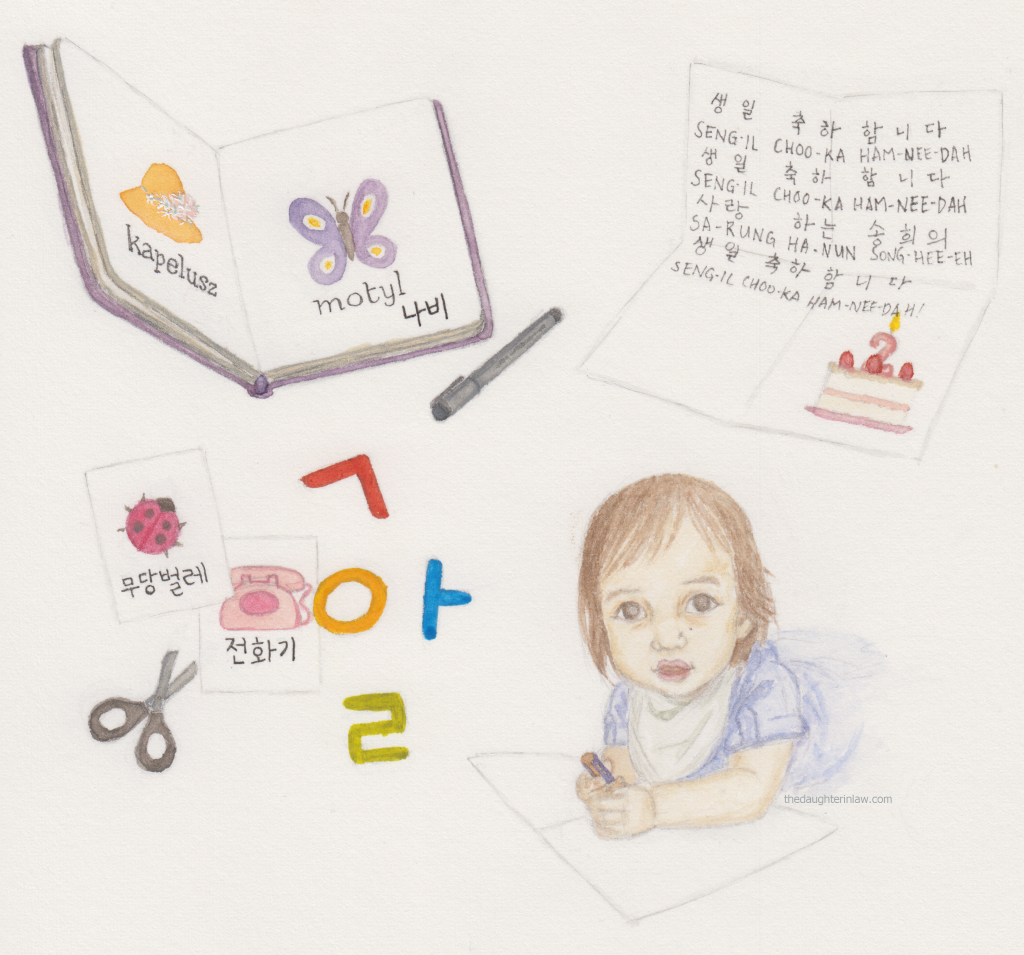 This year we made the decision to move to one of the suburbs of Sydney which has a well established Korean community. It’s an important element of my bilingual strategy for Alice, and has already proven to be worthwhile, with Alice and I building positive relationships with local shops and cafes that can serve us using Korean language, reinforcing it as a useful and meaningful language to Alice. There are some things we still wish for, like a Korean preschool or primary school (there is such a school for the local Japanese community, but not Korean, as it seems that most Korean people here are more concerned about their children’s English skills) Our new neighbourhood is very different from our last, which was predominantly Caucasian. I am aware that not everyone will have the desire to move, the luxury of access to a Korean community, to inlaws or the ability to travel readily. Still, I’d encourage you to rethink what you have around you to work with, and here I’m going to discuss some simple ways you can create some of your own Korean language resources to use at home.
This year we made the decision to move to one of the suburbs of Sydney which has a well established Korean community. It’s an important element of my bilingual strategy for Alice, and has already proven to be worthwhile, with Alice and I building positive relationships with local shops and cafes that can serve us using Korean language, reinforcing it as a useful and meaningful language to Alice. There are some things we still wish for, like a Korean preschool or primary school (there is such a school for the local Japanese community, but not Korean, as it seems that most Korean people here are more concerned about their children’s English skills) Our new neighbourhood is very different from our last, which was predominantly Caucasian. I am aware that not everyone will have the desire to move, the luxury of access to a Korean community, to inlaws or the ability to travel readily. Still, I’d encourage you to rethink what you have around you to work with, and here I’m going to discuss some simple ways you can create some of your own Korean language resources to use at home.


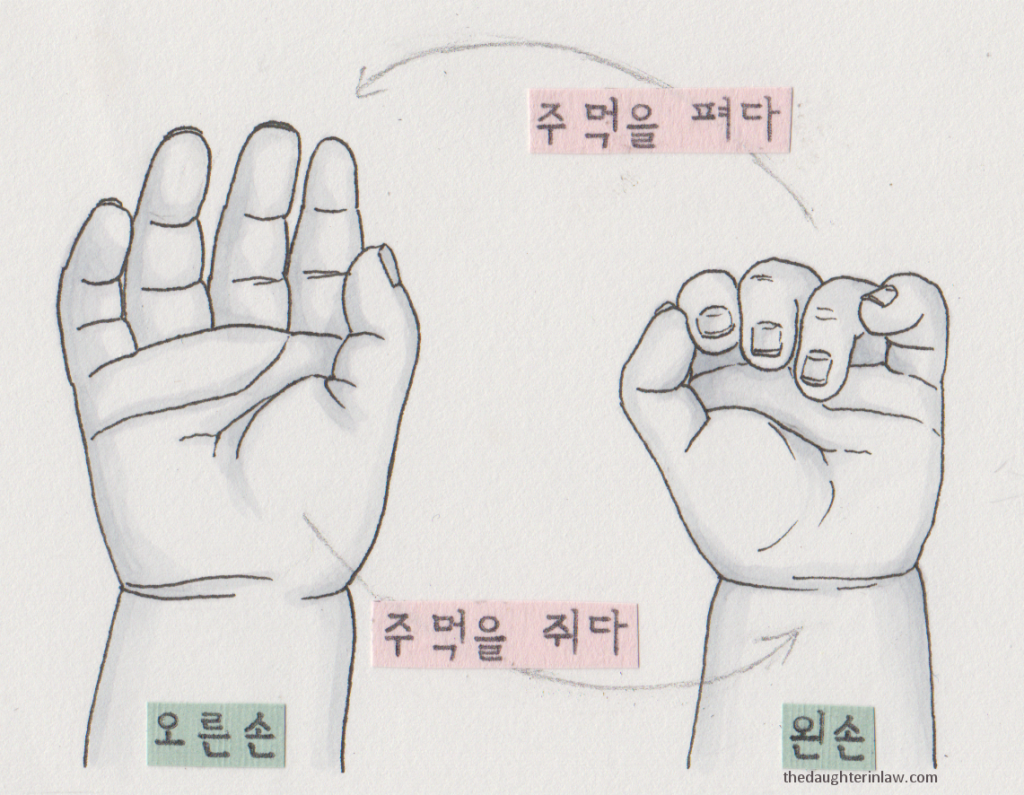

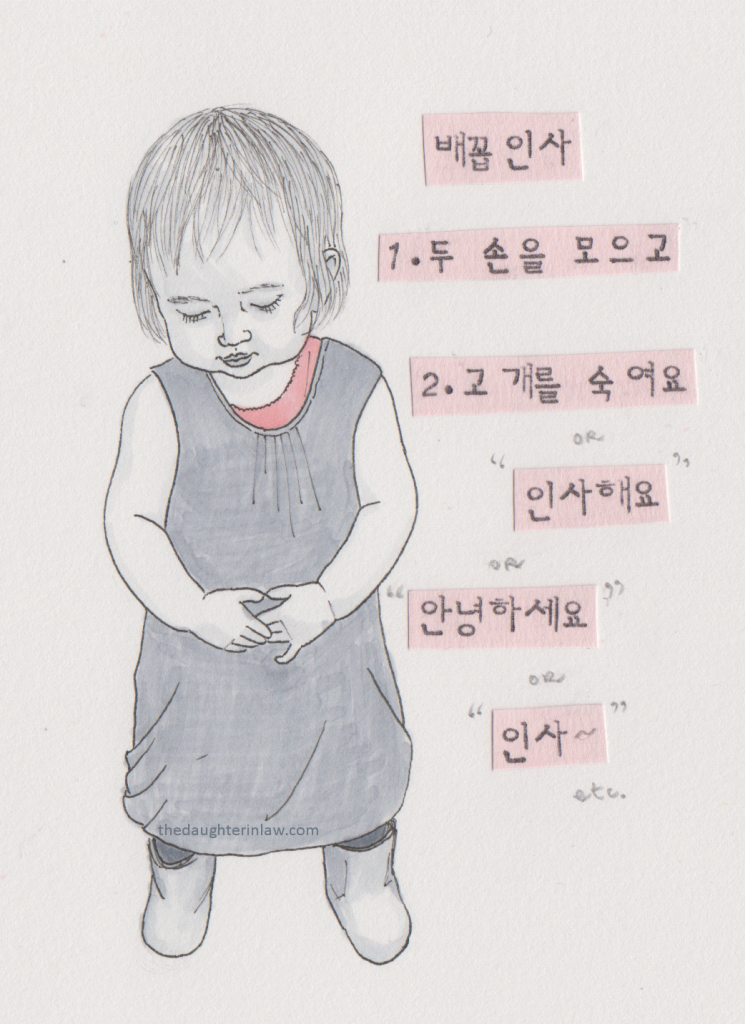 Since Alice is competent at bowing her head to greet and thank people, I recently taught her to “배꼽인사” (belly button bow)
Since Alice is competent at bowing her head to greet and thank people, I recently taught her to “배꼽인사” (belly button bow)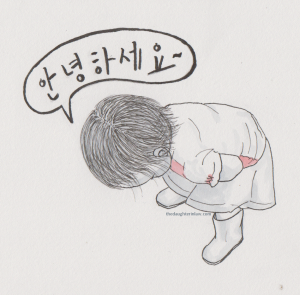

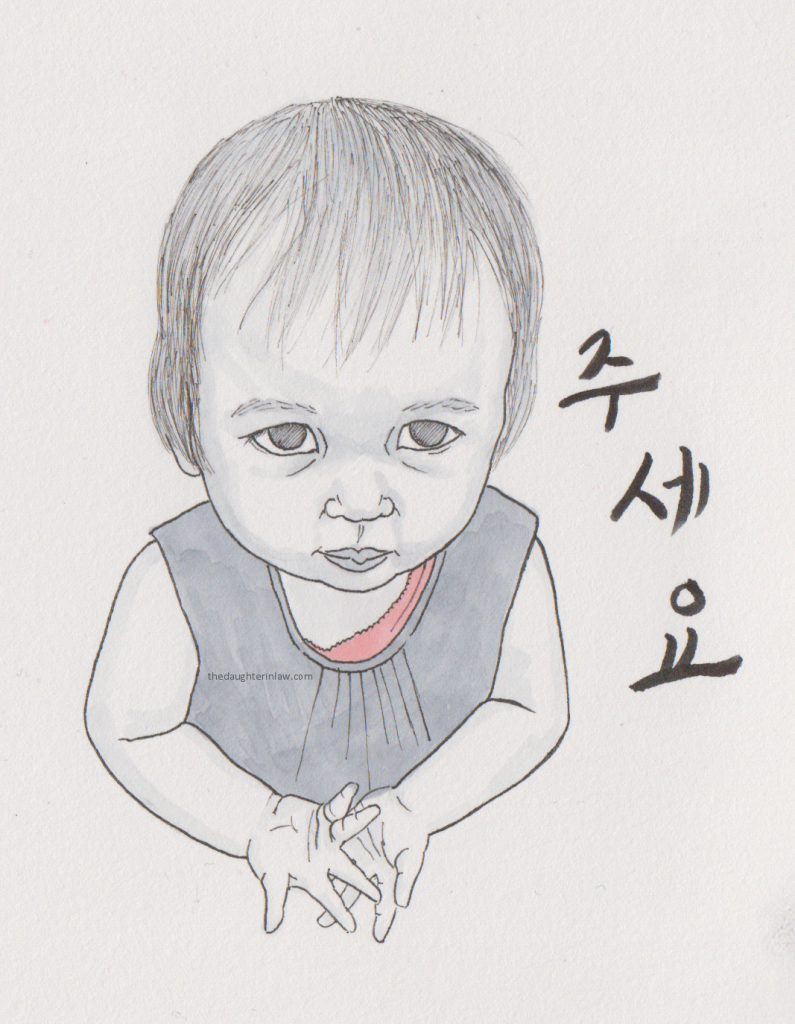 I’ve always felt that good manners are basically essential to getting along well with others in Korea. If I want my daughter to feel comfortable in Korean society as she grows up, teaching appropriate etiquette and manners is really important.
I’ve always felt that good manners are basically essential to getting along well with others in Korea. If I want my daughter to feel comfortable in Korean society as she grows up, teaching appropriate etiquette and manners is really important.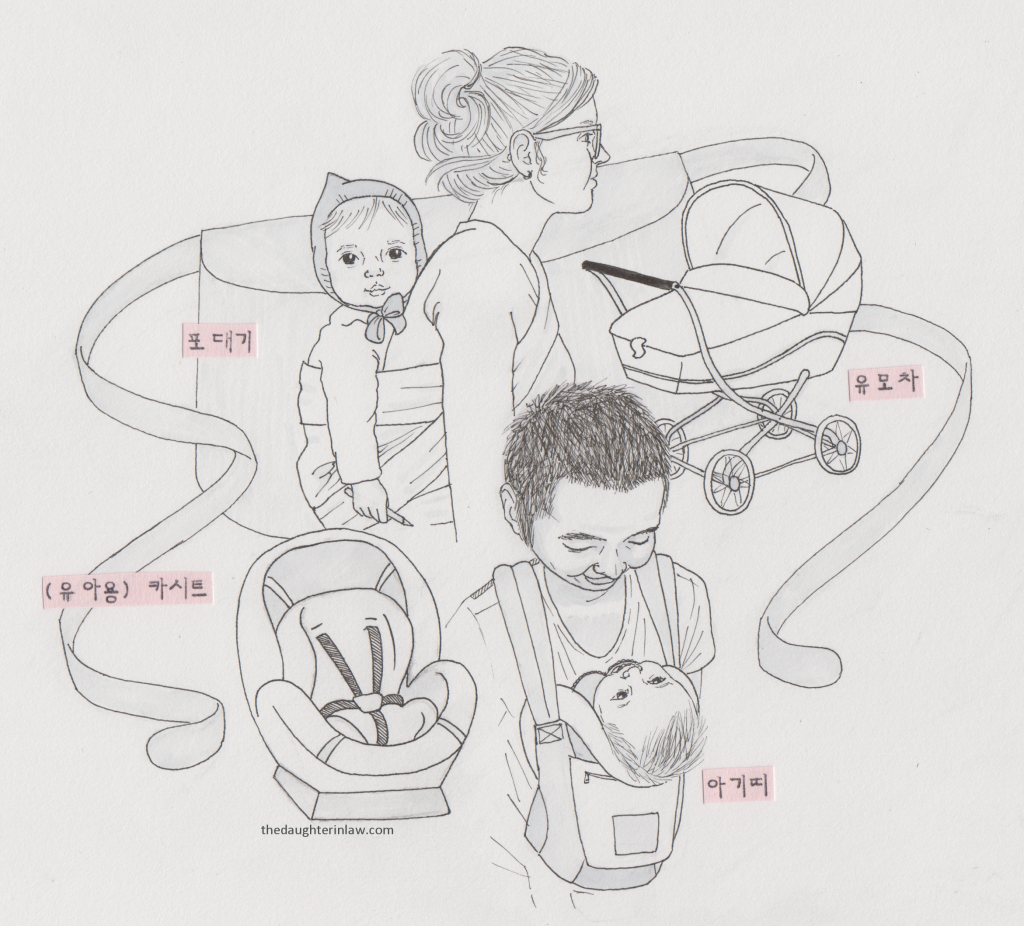
 Notes:
Notes: